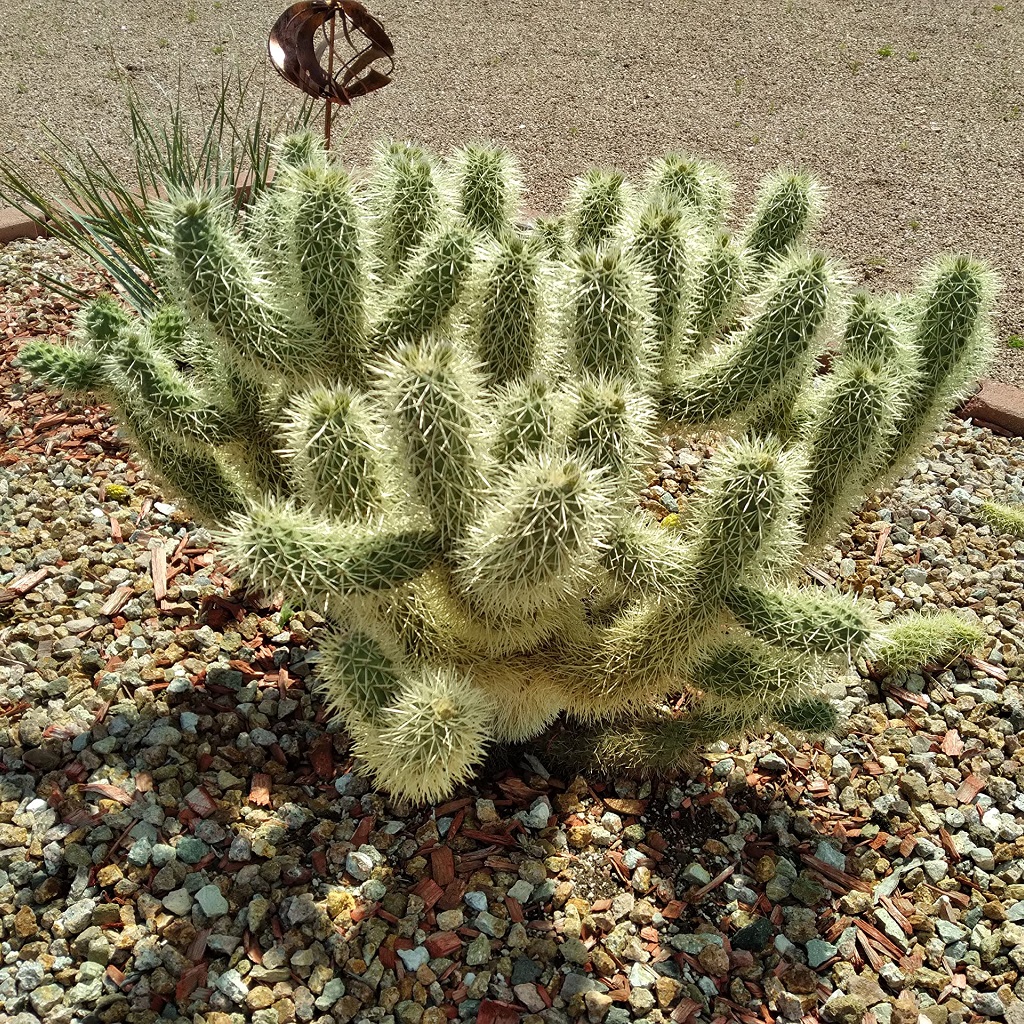Culture
Requires excellent drainage and full sun. Prefers sandy or gravelly soils. Extremely drought-tolerant once established and intolerant of overwatering or poorly drained conditions. Minimal water is needed. Handles extreme heat and arid conditions well. Propagation is very easy from detached stem segments (joints) that readily root where they fall or are placed on the soil surface. Due to its spiny nature, it should be sited away from foot traffic.
Noteworthy Characteristics
Cylindropuntia bigelovii, known as Teddy Bear Cholla or Jumping Cholla, is a distinctive and memorable cactus of the Mojave and Sonoran Deserts. It typically forms a shrubby or tree-like structure with a short main trunk and densely spined, upward-reaching branches. The “teddy bear” moniker comes from the dense, almost plush-looking covering of pale yellow to golden spines that obscure the green stems, particularly on new growth. However, this appearance belies the nature of its spines, which are fiercely barbed and detach with the slightest touch, easily snagging onto clothing or skin, leading to the “jumping cholla” name. This ease of detachment is a primary means of vegetative propagation. The genus Cylindropuntia refers to the cylindrical stem segments, distinguishing them from the flat-padded Opuntia. The specific epithet bigelovii honors Dr. John Milton Bigelow (1804-1878), an American surgeon and botanist who collected plants during the U.S.-Mexico boundary survey.
Problems
Very few problems when grown in appropriate arid conditions. Root rot can occur if overwatered or in poorly drained soils.
Uses
Used in desert landscape designs as a striking architectural specimen or as an impenetrable barrier plant. Its unique form and “glowing” appearance in sunlight can be highly ornamental in the right setting. However, it must be planted well away from paths, patios, play areas, or any location where people or pets might accidentally brush against it. Excellent for creating naturalistic desert habitat gardens. It’s a plant best admired from a distance.
